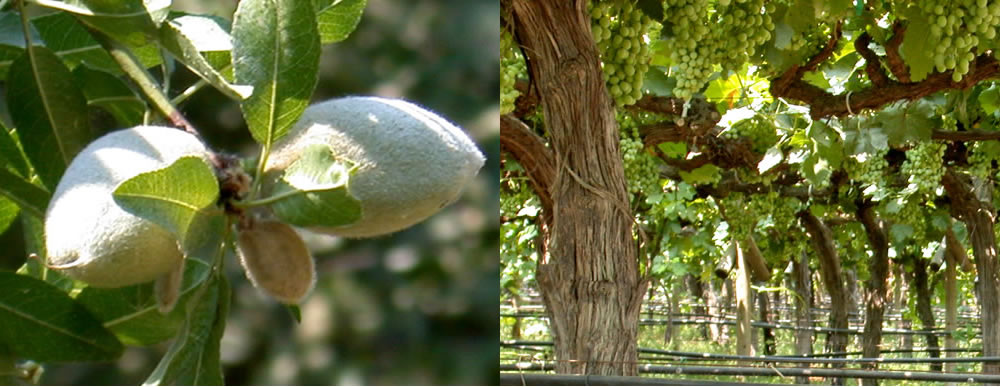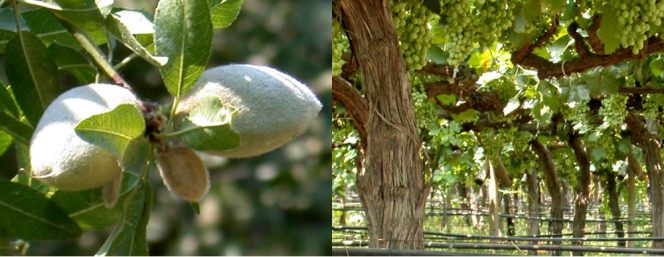
Sally Brown
Part 1 of Part V of our Drawdown series tackled the topic of irrigation, and laid the groundwork for Part 2, where we will do the math to calculate actual potential reductions in irrigation due to amending soils with recycled organics. Part 1 (aka Part V.1) covered the fundamentals of irrigation, reviewed key findings in the literature on carbon and water savings associated with efficient irrigation systems, and highlighted data on increased soil organic matter and water holding and infiltration capacity of the amended soil.
In Part 2, we take this knowledge and apply it to the drawdown of carbon, in particular for California. Drawdown (the project) focused on expensive, highly efficient irrigation. Most high value agriculture in California already uses this type of irrigation. Almonds and grapes are prime examples. In addition to the high value stuff, California also has plenty of acres in less intensive agriculture. Wheat and hay cover close to 25% of the harvested acreage in the state. Rangeland covers an additional 10 million acres.
Field crops accounted for 11% of California’s total agricultural revenue in 2015. This doesn’t take into account the revenue from the cows that graze on the rangeland. While these crops typically depend on the water that falls from the sky, a portion of the field crop acreage in California is irrigated. Economically it does not make any sense to install drip irrigation for these types of crops. This means the irrigation that is used is less efficient and water is wasted. Examples of irrigation rates include:
• Alfalfa: 664,300 acres @3.8 acre ft of water
• Wheat: 340,000 acres @ 2.1 acre ft of water
• Hay (other): 437,280 acres @ 2.8 acre ft of water
• Rangeland: 433,570 acres @ 2.0 acre ft of water
What would happen if compost were added to this mix? The literature cited Part V.1 predicts that with enough compost, you are likely to see more than double the available water in soil. Saying that you would see a 25% increase sounds reasonable.
Sharpen Your Pencils
Let’s do the math.
1. Take the total number of acres under irrigation for these crops: 664,300 (alfalfa)+ 340,000 (wheat) + 437,280 (hay), + 433,570 (rangeland) = 1.875 million acres
2. Calculate the total amount of water x that acreage: 2.5 million (alfalfa) + 0.7 million (wheat) + 1.22 million (hay)+ 0.87 million (rangeland) acre feet = 5.33 million acre feet of water
3. One acre foot — = 325,850 gallons — is the amount of water it takes to cover 1 acre to a depth of 1 ft . That’s a significant amount of water.
4. If we figure that using compost would mean that you need 25% less water that leaves you with: 5.33 x 0.25 (25%) = 1.33 million acre feet extra of water
5. How much is that on people terms? Figure that a person uses 100 gallons of water a day:
1.33 million acre feet x 325,850 gallons of water per acre ft/100 gallons per person per day/365 days in a year = enough water for 11.9 million people a year.
Now, I am not sure what the energy savings associated with that might be or how that would impact the Drawdown ranking. I can tell you that it would impact the water balance in California in a good way.
How Much Compost Is Needed?
The drawback (not the drawdown) here is how much compost you would need. Remember from Part V.1 that it took high rates of compost to get those changes in soil water holding capacity. So let’s say 100 tons/acre is realistic. We have 1.875 million acres that need this compost to see that change. A brand new paper by Harrison et al looked at the amount of compost that will be generated in California with the SB1383 law.
Using total organic waste and assuming that only 55% remains after composting:
1. 20.7 million tons of waste * 0.55= 11.4 million tons of compost
2. If we apply 100 tons/acre of that compost, each year you could treat:
11.4 million tons/ 100 tons per acre = 113,850 acres
3. We have 1.875 million acres that needs the compost:
1.875 million acres/ 113,850 acres per year = 16+ years.
It would take more than 16 years’ worth of compost to get us that water savings. That also means that all of the other crops that use compost/depend on compost would be SOL (sh** outta luck) for those 16 years.
The take home is that compost and other organics improve soil physical properties. One of those properties is water retention. This is not news. This is something that we’ve known for a long time. As a result of laws like CA SB1383 we’ll have more compost to put on soils. The news here is the additional quantity of compost and the broader context to appreciate its value. Back in the 1970s, we didn’t focus on climate change or water shortages. Now we do. Not taking advantage of this solution — that would be the waste.
Sally Brown, BioCycle’s Senior Adviser and long-time Connections columnist, is a Research Professor in the College of the Environment at the University of Washington.














